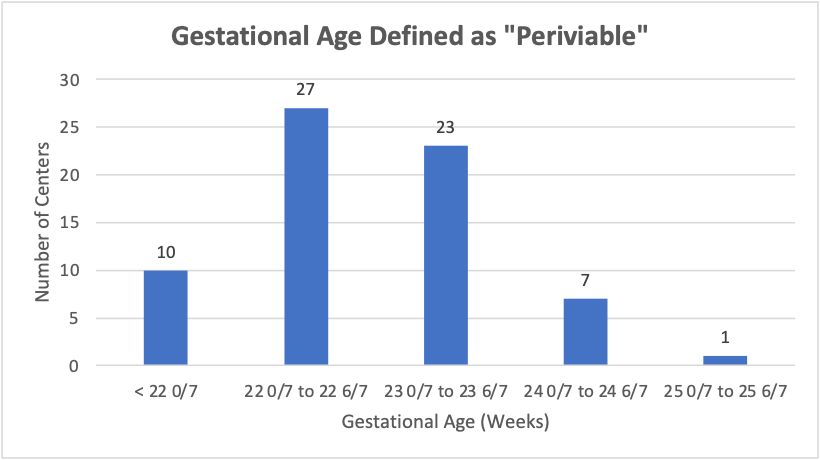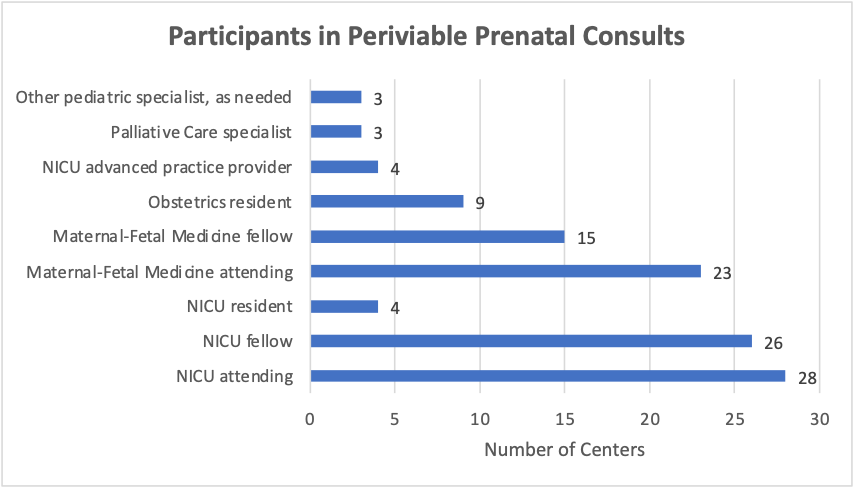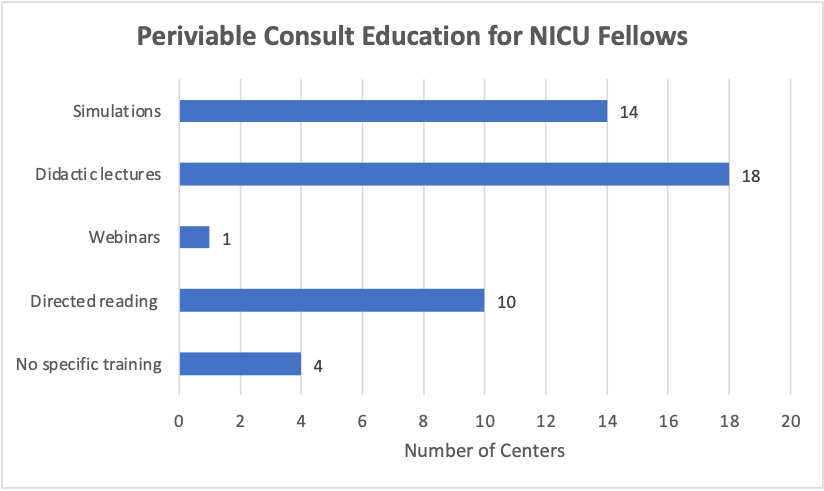Neonatal General 7: Epidemiology, Outcomes and Periviability
Session: Neonatal General 7: Epidemiology, Outcomes and Periviability
387 - Exploring Periviability Counseling Practices: Findings From A National Survey
Saturday, April 26, 2025
2:30pm - 4:45pm HST
Publication Number: 387.4618
Rebecca R. Saliga, Nationwide Children's Hospital, Columbus, OH, United States; Maria Jebbia, Nationwide Children’s Hospital, Columbus, OH, United States; Cecilie Halling, Nationwide Children's Hospital, Columbus, OH, United States; Sheria Wilson, Nationwide Children's Hospital, Columbus, OH, United States; Jessica O'Neal, Nationwide Children's Hospital, Columbus, OH, United States; Natalia Henner, Ann & Robert H. Lurie Children's Hospital of Chicago, Chicago, IL, United States; DonnaMaria Cortezzo, Connecticut Children's Medical Center, Durham, CT, United States; Eric A. Raynal, Cincinnati Children's Hospital Medical Center, Cincinnati, OH, United States; Alaina Pyle, Connecticut Children's Medical Center, University of Connecticut School of Medicine, MONROE, CT, United States; Hevil Shah, Cook Children's Medical Center, Fort Worth, TX, United States; Rachel Han, Riley Hospital for Children at Indiana University Health, Indianapolis, IN, United States; Shilpa Vyas-Read, Emory University, Atlanta, GA, United States; Mara DiBartolomeo, Johns Hopkins All Children's Hospital, St. Petersburg, FL, United States; Leeann Pavlek, Nationwide Children's Hospital, Columbus, OH, United States

Rebecca R. Saliga, MD (she/her/hers)
Fellow
Nationwide Children's Hospital
Columbus, Ohio, United States
Presenting Author(s)
Background: As the threshold of viability changes, prenatal consultation and management strategies continue to evolve. Practices regarding the care of these infants vary widely across sites, leading to inconsistent approaches for counseling, resuscitation, and subsequent management approaches. As such, there is a growing need for standardized and evidence-based guidelines to aid providers with up-to-date prenatal counseling recommendations and optimal management strategies. This study aims to identify current institutional practices to improve the quality of prenatal counseling for families and care for periviable infants. Establishing a baseline for existing practices will allow additional multicenter collaborative quality improvement and research opportunities focused on this high-risk group of patients.
Objective: To evaluate similarities and differences between major neonatal intensive care units (NICU) in prenatal consultation practices, guidelines, and educational programs related to periviability.
Design/Methods: An online survey was distributed to the 47 centers in the Children’s Hospitals Neonatal Consortium, a network of level IV NICUs across the United States and Canada. Medical directors provided survey responses focused on care at each site’s primary delivery hospital.
Results: Of the 47 sites, to date, 30 responses have been received. While wide variation exists between sites in the definition of periviability (Fig. 1), 87% report agreement between obstetrics and NICU teams on the definition. The survey noted practice discrepancies in both when a prenatal consult and/or resuscitation would be offered. Overall, 23% perform consults at < 21 weeks, 53% at 21 0/7 to 21 6/7 weeks, and 23% not until ≥22 weeks. 90% of sites offer resuscitation starting at 22 weeks with 80% reporting no specific lower limit of estimated fetal weight at which they will attempt resuscitation. Comfort care is offered as late as 24 weeks gestation at 43% of sites. Team members participating in the consults differ between sites (Fig. 2) with only 40% of sites having written guidelines on how to perform periviable consults. For consults, 37% of sites have specific tools to aid in shared-decision making and 20% have periviability educational tools for parents. NICU fellow periviable consult training is mostly through didactic lectures, however, 13% of sites report no specific training (Fig. 3).
Conclusion(s): This national survey of NICUs revealed significant variability in the definitions and consultation practices for periviable deliveries, emphasizing the need for standardization across institutions.
Figure 1
 Gestational Age Defined as "Periviable"
Gestational Age Defined as "Periviable"Figure 2
 Participants in Periviable Prenatal Consults
Participants in Periviable Prenatal ConsultsFigure 3
 Periviable Consult Education for NICU Fellows
Periviable Consult Education for NICU FellowsFigure 1
 Gestational Age Defined as "Periviable"
Gestational Age Defined as "Periviable"Figure 2
 Participants in Periviable Prenatal Consults
Participants in Periviable Prenatal ConsultsFigure 3
 Periviable Consult Education for NICU Fellows
Periviable Consult Education for NICU Fellows
